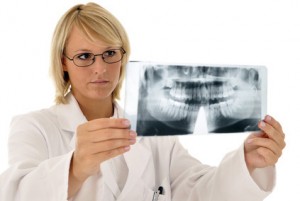TMJ Symptoms
Understanding symptoms can help you get solutionsTMJ is often called THE GREAT IMPOSTER
 TMJ symptoms can be wide ranging, complex and difficult to understand. Frequently patients go from doctor to doctor looking for answers to these problems only to be frustrated again and again. This is why the name The Great Imposter is so accurate. Patients are treated for symptoms not underlying causes.
TMJ symptoms can be wide ranging, complex and difficult to understand. Frequently patients go from doctor to doctor looking for answers to these problems only to be frustrated again and again. This is why the name The Great Imposter is so accurate. Patients are treated for symptoms not underlying causes.
If you experiencing any of the following common symptoms:
- facial pain and soreness
- Tension headaches or tmj and/or muscle headaches
- migraines and other vascular headaches
- ear pain …otalgia
- ear ringing
- sinus pain or pressure
- ear stuffiness or pressure
- distorted hearing
- eye pain
- pain behind the eye..retro-orbital pain
- eye sensitivity
- neck pain
- back pain
- tender jaw muscles
- muscle tightness
- MPD or Myofascial Pain and Dysfunction
- Fibromyalgia
- Sleep Disordrs
- Morning Headaches
- muscle pain
- pain when biting, chewing or yawning
- difficulties closing and opening the mouth
- popping or clicking sounds when opening the mouth
- sensitive teeth
- excessive tooth wear
- numbness in the fingers, hands & arms
and you can’t seem to find a way to resolve them, they could be caused by a dental problem known as Temporomandibular Joint Disorder or Dysfunction (TMD).
Do I have TMJ Disorder?
Symptoms include migraines, neck pain, jaw pain, lower back pain, snoring, sleep apnea. Use our Free TMJ Disorder Assessment ToolsHow could your TMJ be the cause of your unexplained chronic pain?
TMJ is often ignored by the medical community.
If you’ve sought medical treatment with no results, the next logical step to finding out what is at the root cause of your pain or discomfort is to seek a consultation with a dentist trained in physiologic dentistry. Dr. Shapira has over 30 years experience in physiologic dentistry and pain treatment.
The Trigeminal Nerve Connection
Often, unresolved chronic pain or discomfort is associated with the temporomandibular (TMJ) joint. You use this important joint to eat, chew, talk or yawn. The successful working of these joints depends on the smooth interaction of ligaments, muscles, bones and discs that make up the TMJ.
The largest input to our brain is the Trigeminal nerve, it is amplified by the reticular activating system which gives it incredible influence on all head and neck pain or disorders. Differential diagnosis of orofacial pains is crucial in treating all TMJ patients.
Our brain is our computer, and if it is flooded with painful (Nociceptive) input from the Trigeminal Nerve the output is perceived as PAIN!
If there is any misalignment in your bite painful or uncomfortable symptoms can result, as:
- the components of your TMJ encounter friction spots
- the jaw muscles become overworked sometimes radiating pain to other body parts or
- the underlying nerves become compressed sending pain signals to your brain.
- Excessive muscle contraction increases friction in the TMJ’s
Balance your jaw and ease your TMJ symptoms
 If your jaw disorder symptoms are caused by a misaligned bite, you have a good chance of easing or even eliminating them with TMJ dental treatment. A dentist trained in physiologic dentistry can diagnosis TMD to determine an effective course of treatment to realign your bite.
If your jaw disorder symptoms are caused by a misaligned bite, you have a good chance of easing or even eliminating them with TMJ dental treatment. A dentist trained in physiologic dentistry can diagnosis TMD to determine an effective course of treatment to realign your bite.
- The dentist will first check your medical history to ensure that there is nothing else that could be causing your unexplained symptoms.
- The next step is to assess the misalignment of your bite that can cause so many uncomfortable symptoms. A complete examination includes muscle palpation and takes close to an hour or more
- If misalignment is detected, the dentist will measure your jaw function and relax your jaw muscles by massaging them with a TENS machine – an extremely low frequency electrical stimulator, which activates blood flow. Physiologic Dentistry utilizes sophisticated diagnostics that track jaw movement and function and can evaluate muscle function and muscle symmetry
- When the tension in your muscles has been relieved, the best position for your bite will be found. This is then kept in the right place by positioning a non invasive orthotic device over your teeth. If successful, longer term stabilization can be achieved by dental restorations or orthodontics.
- The first step is the Diagnostic Physiologic Orthotic. The orthotic is an integral part of the diagnostic process. It is our trial appliance that determines a three dimensional not stressed position of the mandible. It is adjusted to reflect changes in posture that occur during treatment. These changes are the result of healing and take time to occur and stabilize.
- Miraculous instant relief and slower relief are difernet versions of that healing process. There are many factors that affect the pathways of healing.
Once your bite is in a healthier more comfortable position, you should find your pain fading away. These results with the diagnostic orthotic are used as a blue print for long term treatment.


0 Comments